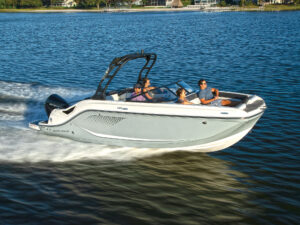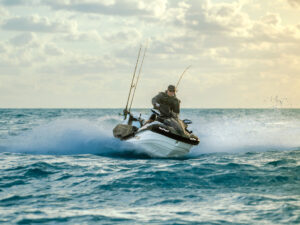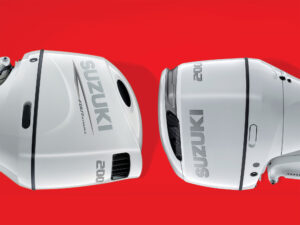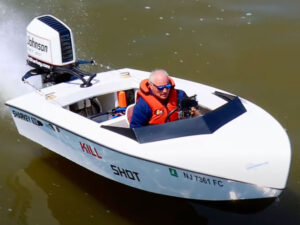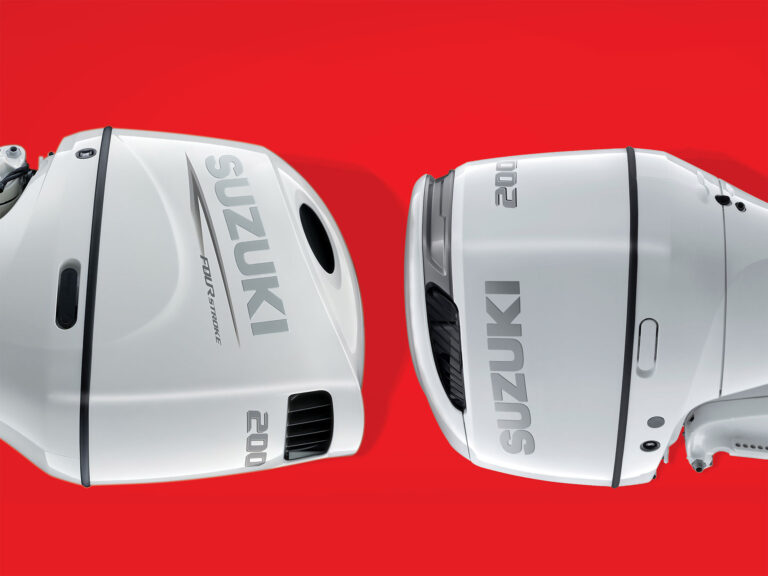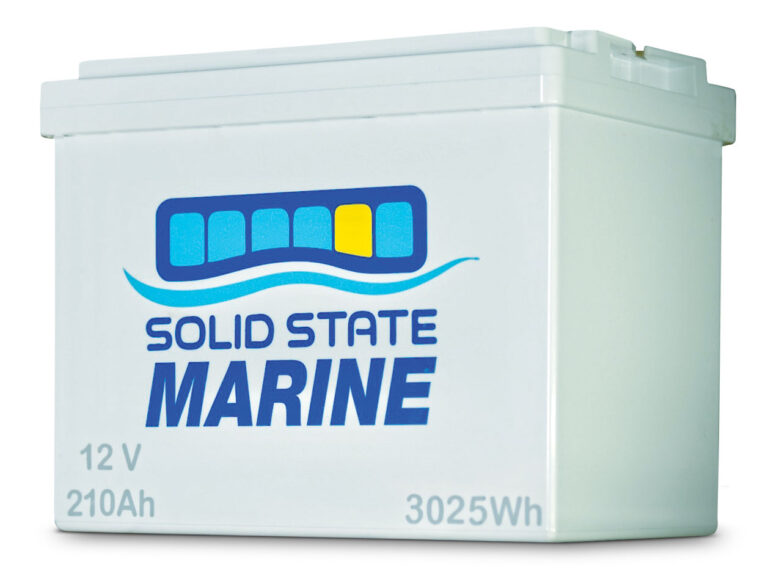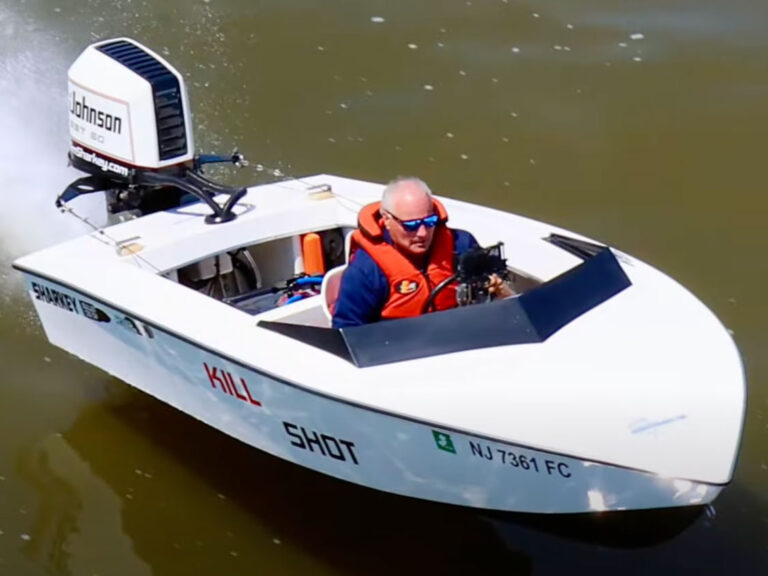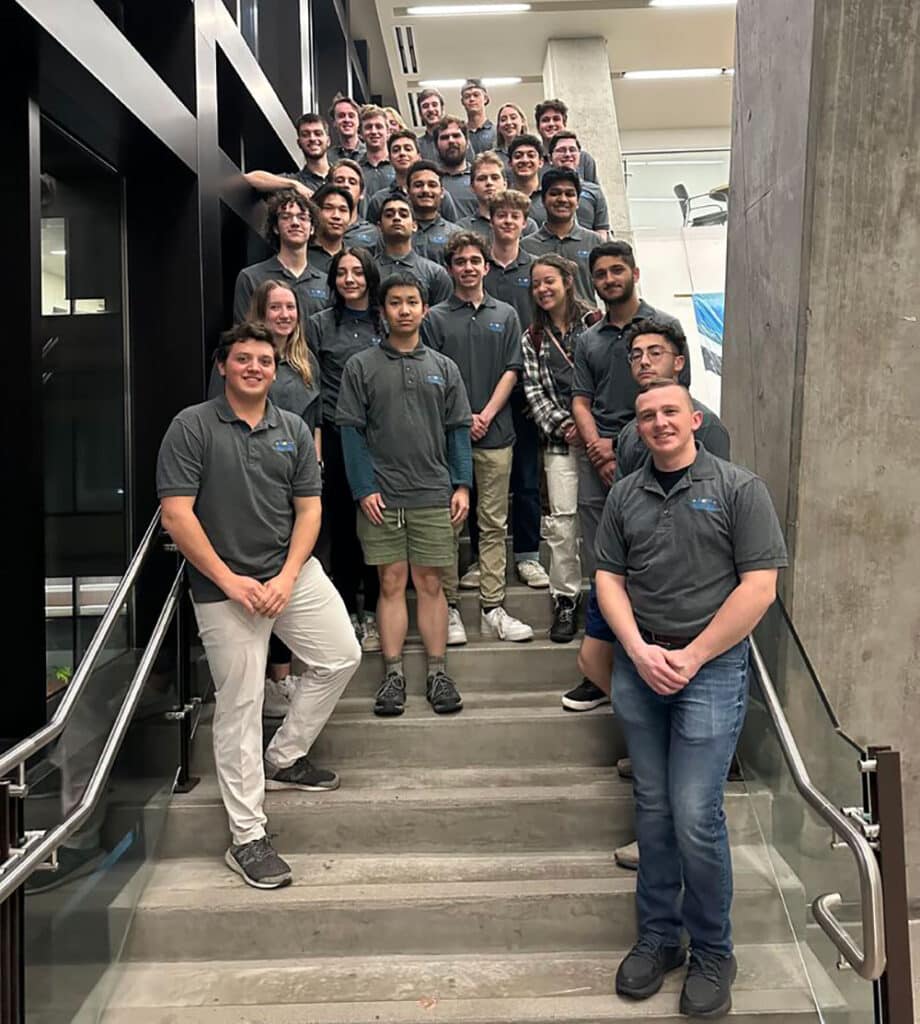
After a few decades making a living on, in, around and under saltwater, I’ve found that Murphy’s Law — whatever can go wrong, will, at the worst possible moment — can be a bit optimistic.
Engineering students in Pittsburgh Electric Propulsion, a University of Pittsburgh sponsored electric propulsion design team, learned that lesson early in life at this year’s Promoting Electric Propulsion (PEP) for Small Craft college engineering competition hosted by the American Society of Naval Engineers. Coming off a third place out of seven boats in last year’s race, the team expected their completely revamped propulsion system to double their 13-foot Zodiac’s average racing speed to more than 20 mph over the five-mile course. But then Murphy struck the night before the race when a 12-volt electrical contactor wouldn’t close, leaving the boat dead in the water.
New Propulsion System
The team’s prior race entry, hindered by Covid quarantining restrictions during the build, had batteries cobbled together by hand and mounted in a Plano storage bin. Those batteries powered an electric motor that wouldn’t quite fit within the 1968 outboard chassis, and the motor controller was zip-tied to the transom. This year’s entry is more compact, fitting into a 1998 Evinrude 30 hp outboard shell, while a custom-built clear acrylic battery and electronics housing highlights their work.
They also incorporated commercial battery safety standards into their new build, choosing, for example, laser-cut sandwiched nickel, stainless and copper material for their battery cell interconnecting busbar. This improves conductivity and thermal performance and also facilitates independent fusing for each individual battery cell. Added sensors with real-time computer monitoring similarly increase both safety and performance. “We wanted the battery to be mobile, safe and secure without significantly sacrificing energy and power density,” says Nick Genco, one of the co-founders of UPitt’s electric boat racing program. “We also took a lot more time to polish things,” he adds, resulting in a considerably refined end product.
Those updates also shave more than 50 pounds off their rig, increase battery capacity by 25 percent, and provide more than 350 amps continuous draw and 600 amps for brief spikes to fully power their 24 kilowatt (32 hp) electric motor. Their design seemed like a race-day winner.
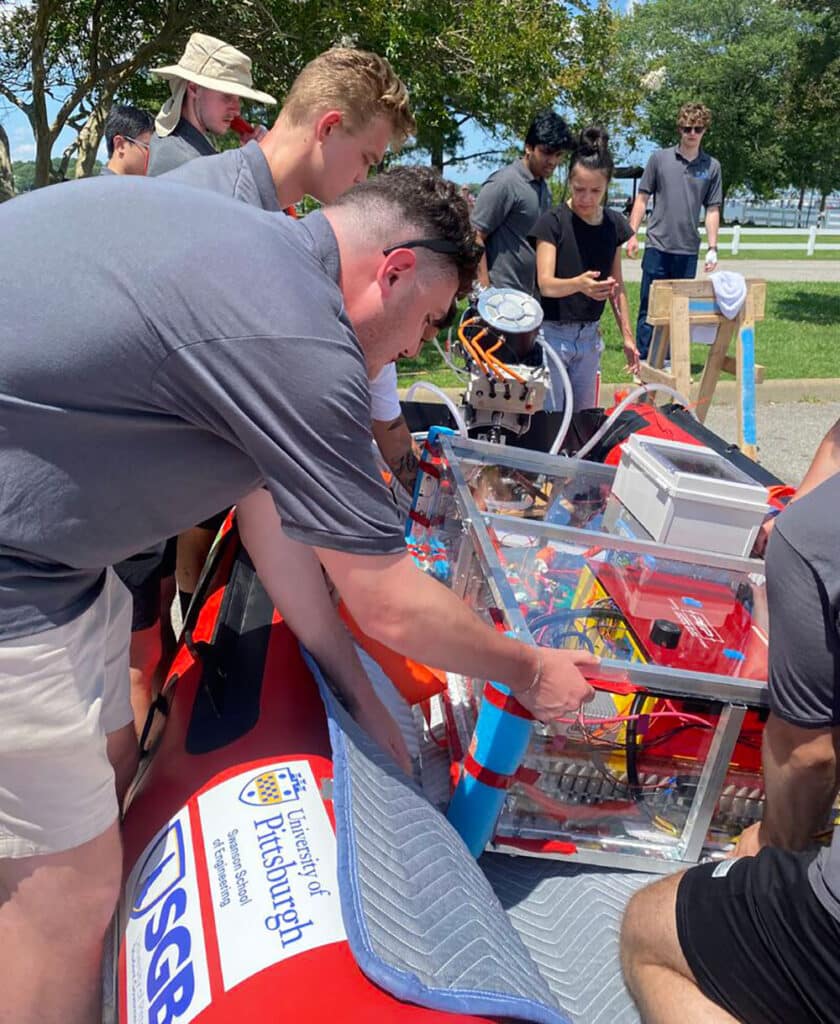
Murphy’s Interference
Supply chain backlogs delayed those efficient, safe laser-cut battery busbars — they were originally ordered in February but not delivered until mid-June, just two weeks before the race. Then their battery welding equipment, needed for the 4,050 individual busbar connections, died just a third of the way into battery assembly. Phoenix Laser Solutions, about two hours north of Pittsburgh, stepped up to solve the battery bus welding issues, and several long nights by the entire team buttoned up the propulsion system 40 hours before race start time, but still more than 400 miles away by car.
What should have been a quick systems test the evening before the race revealed a problem with a circuit that smooths otherwise immense current spikes. At 3 am, the team finally identified the issue. A quick redesign with parts on hand had the motor running again, and the team headed to the launch ramp an hour before the race’s scheduled start, with all eyes focused on the finish line.
Unfortunately, a $20 resistor that tested fine earlier wouldn’t handle the increased load of open water. With no spare on hand, and no time to find a replacement, they couldn’t even make the race’s start.
“It was a pretty disappointing ending, but something that does happen to early student engineering teams,” Genco says. “I am still incredibly proud of the product our team put together.”
Read Next: College Students Build Electric Boats, Experience, and Confidence at University of Pittsburgh
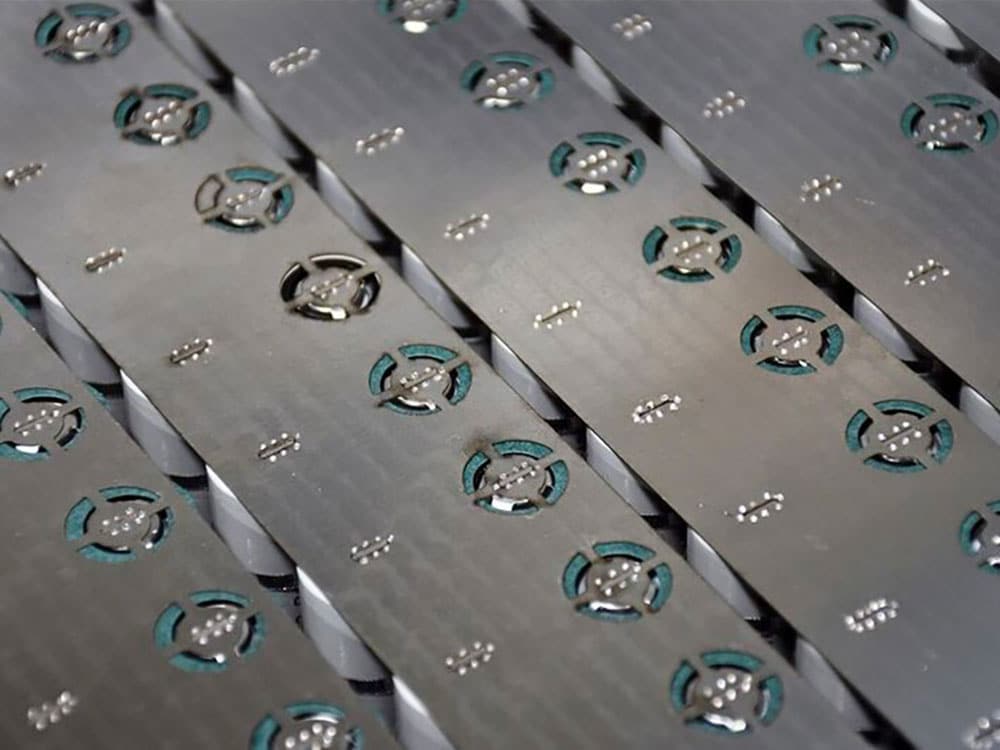
Moving Ahead
We all know Murphy’s Law, attributed to U.S. Air Force aerospace engineer Captain Edward Murphy early in the Cold War, is simply an adage employed when we perceive inanimate objects conspire against us. A universal truth, and likely better takeaway for the Pittsburgh Electric Propulsion team, comes from Albert Einstein: “Failure is success in progress.”
The team looks forward to success moving forward.

